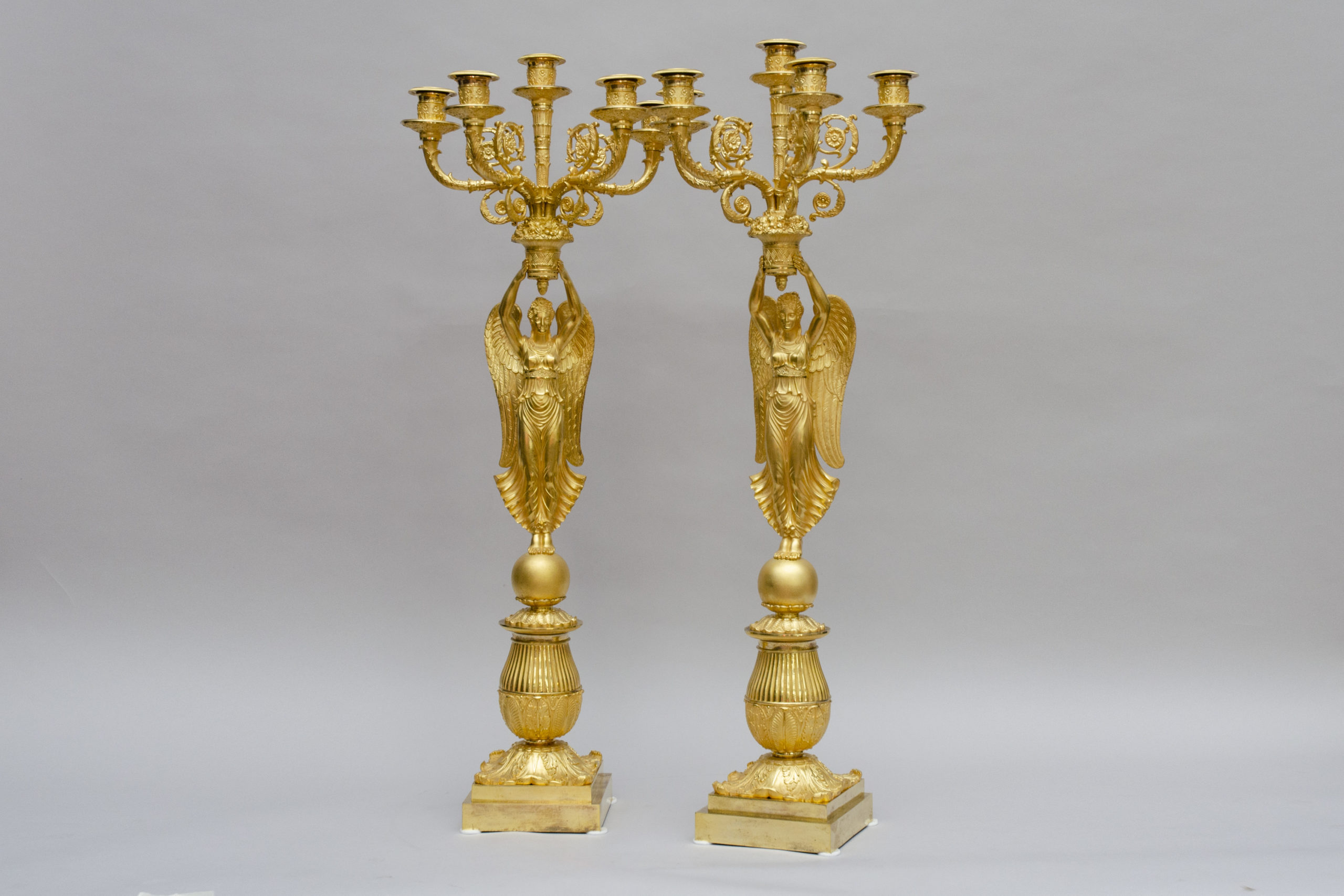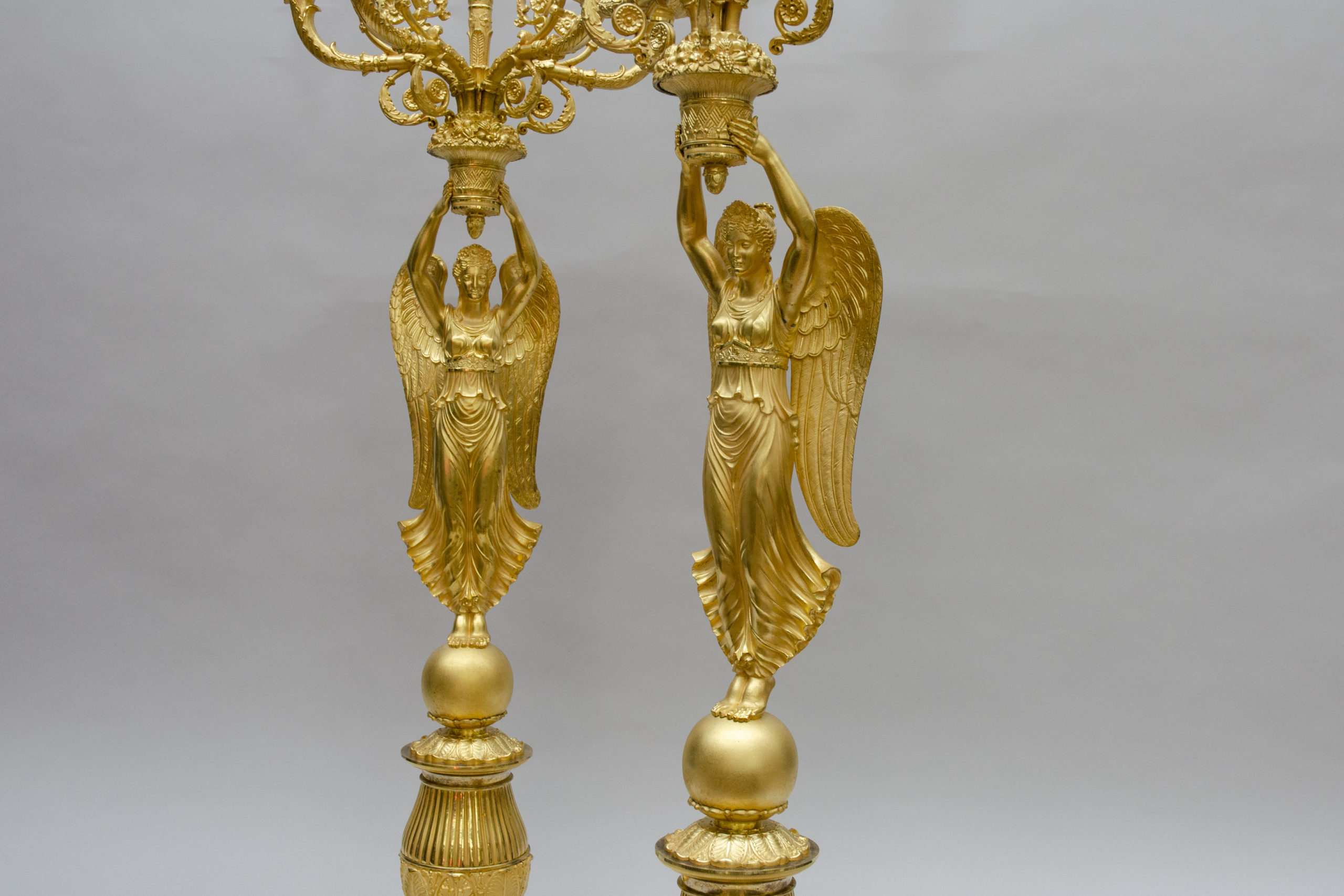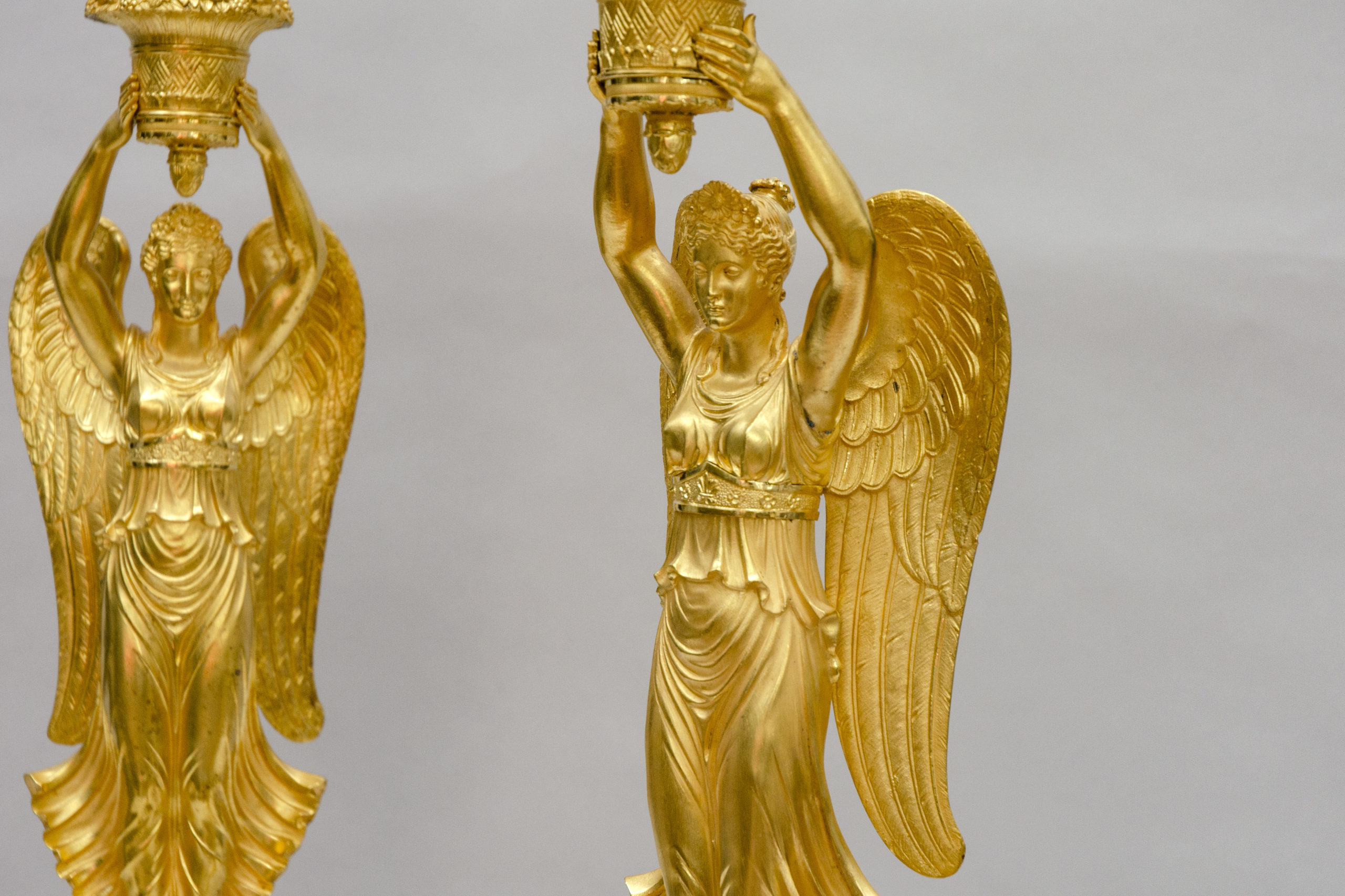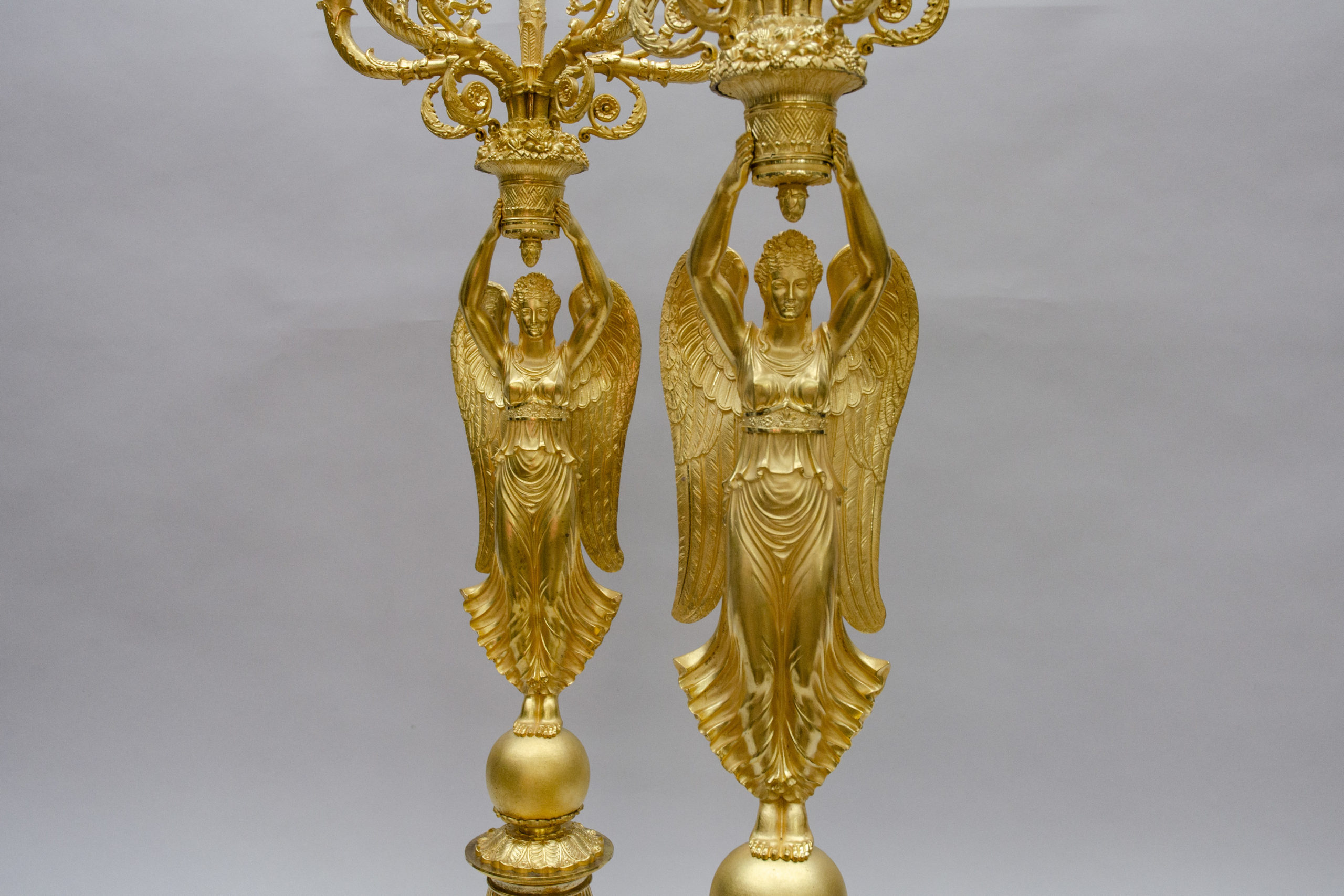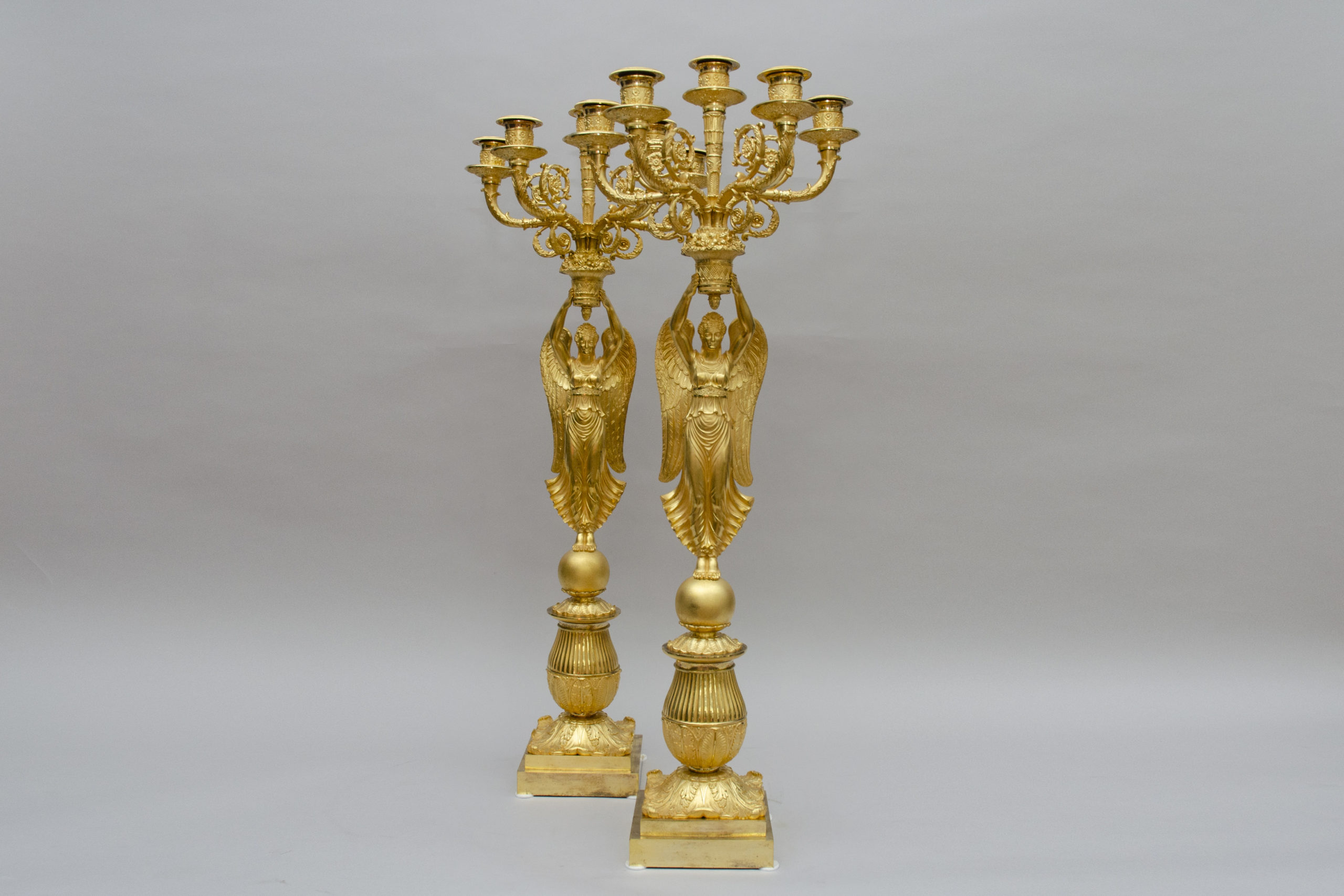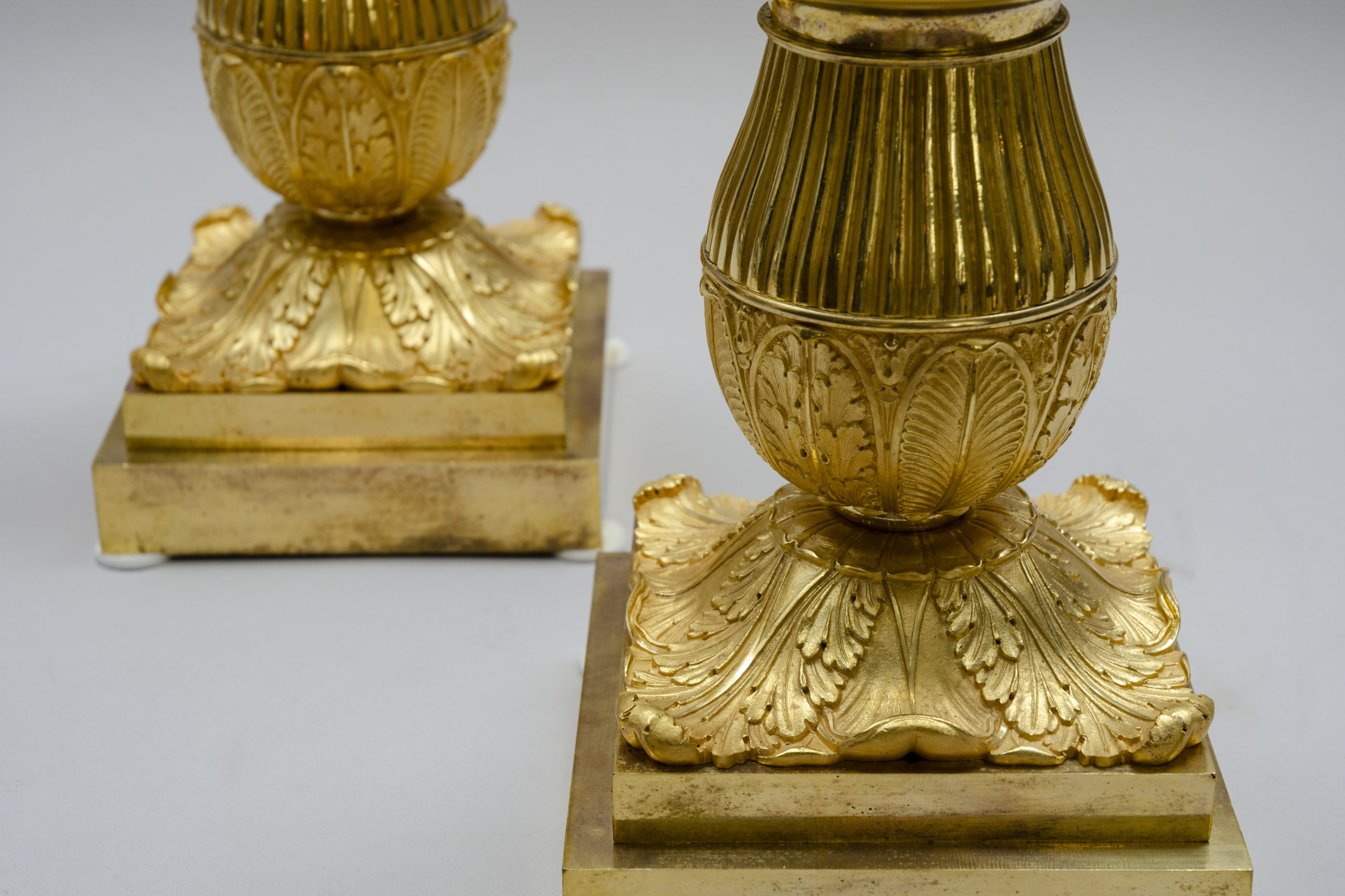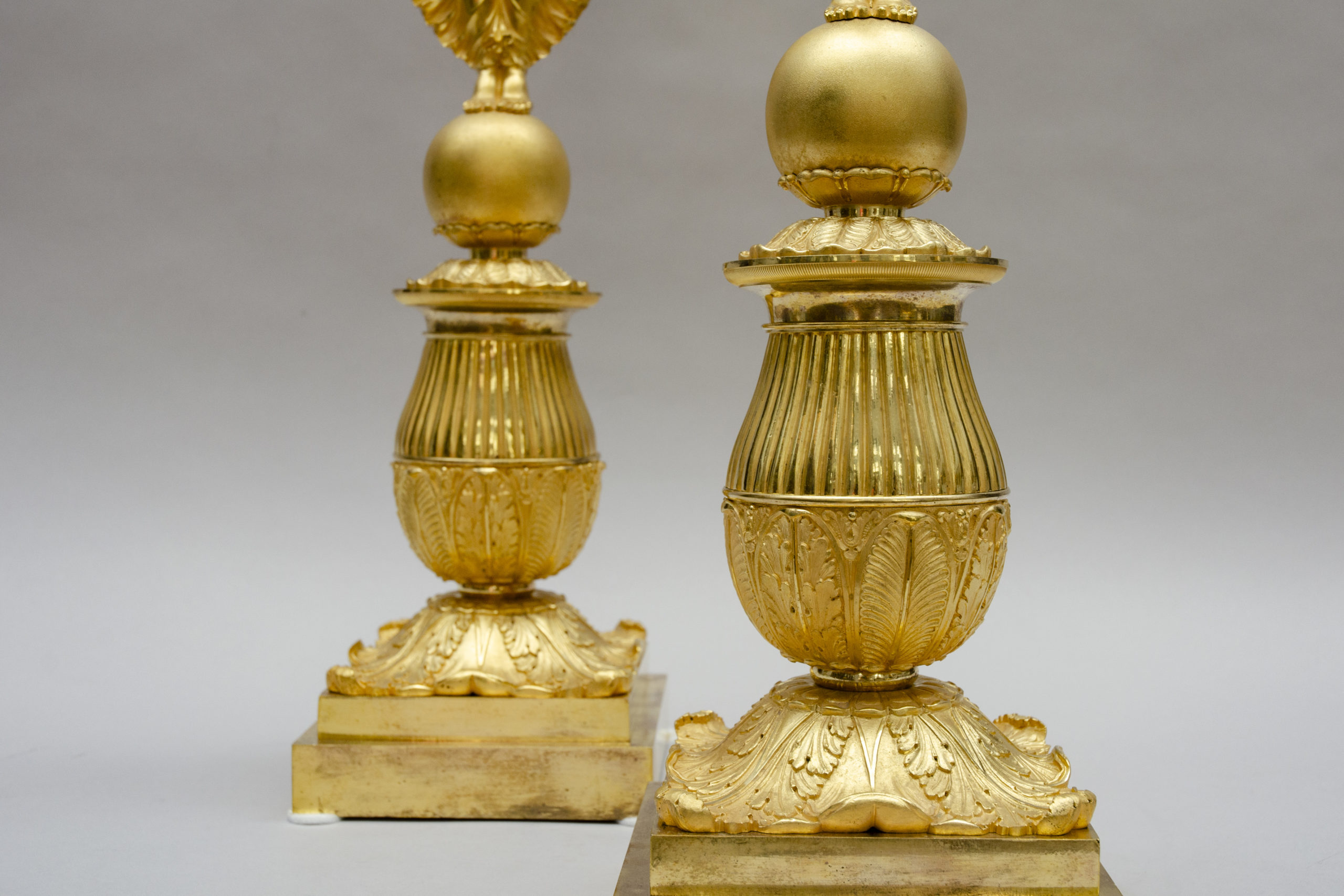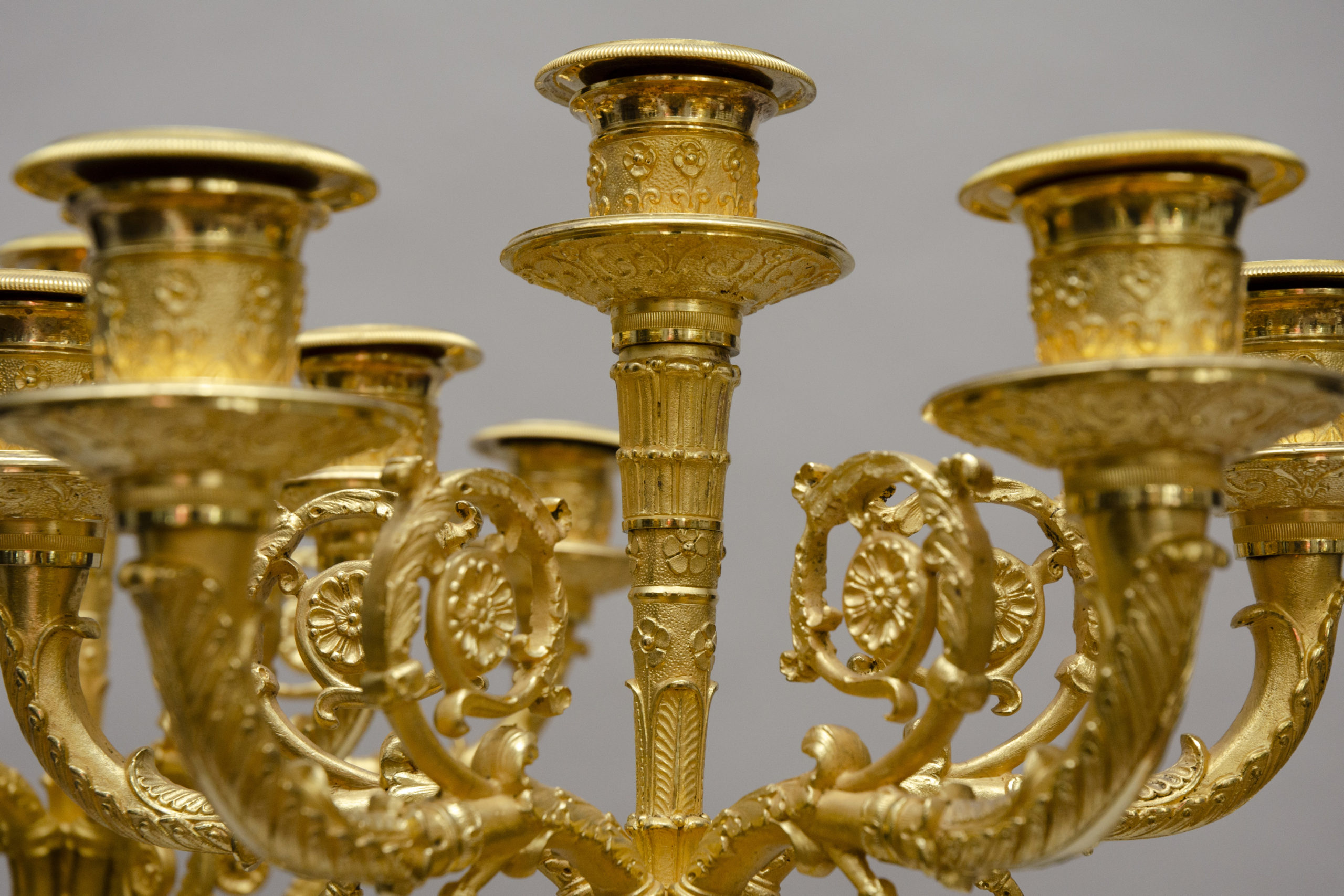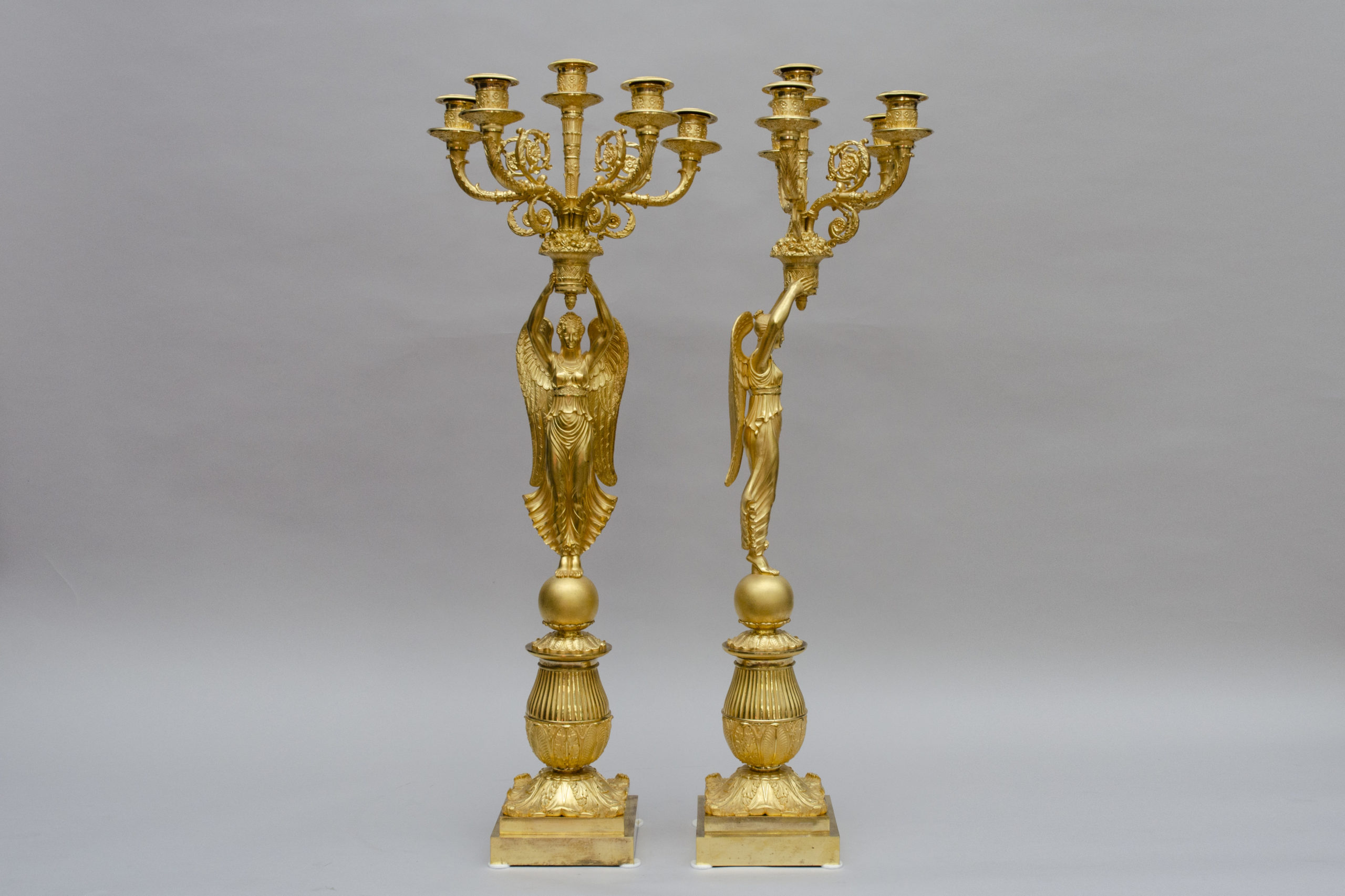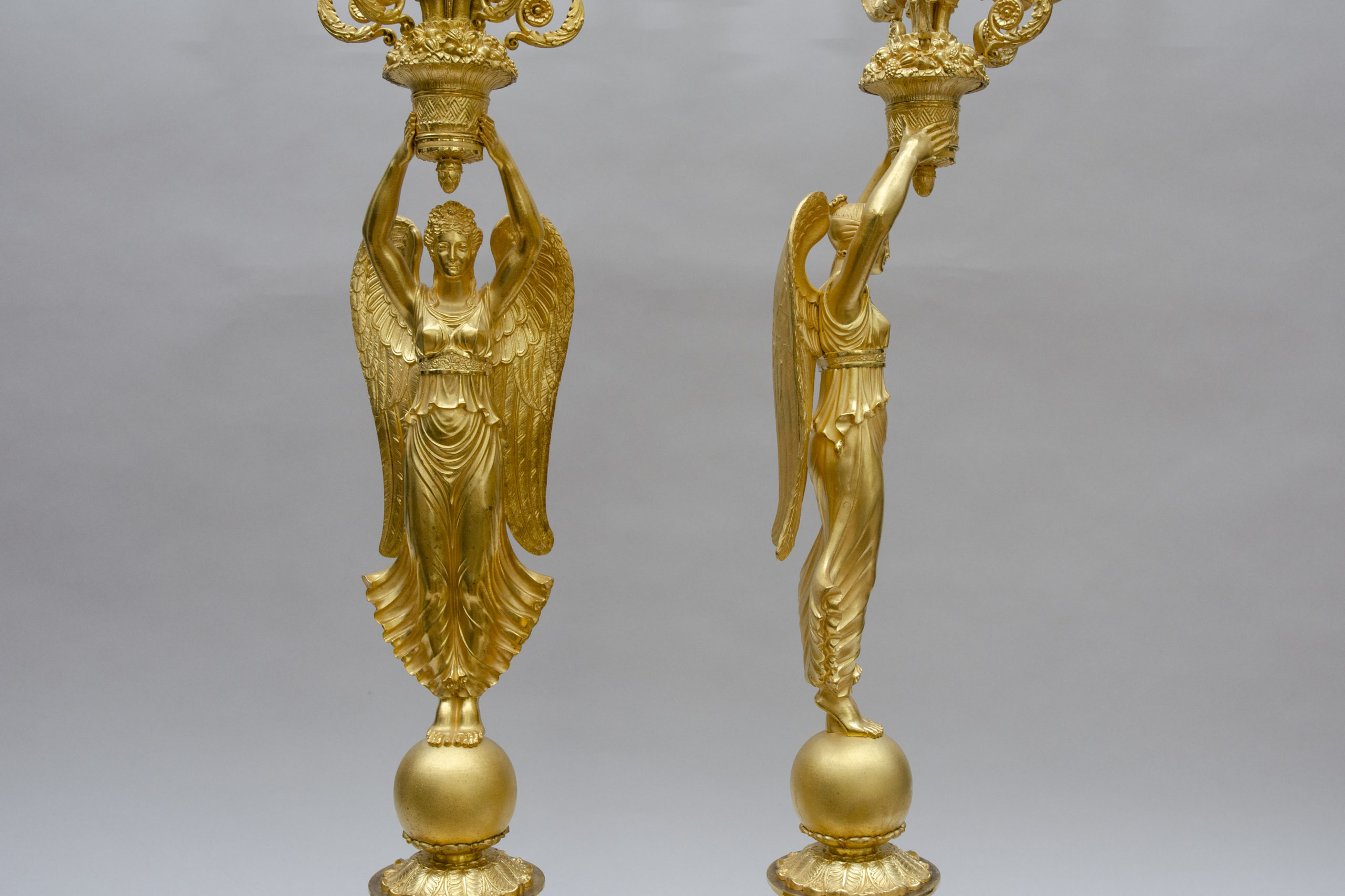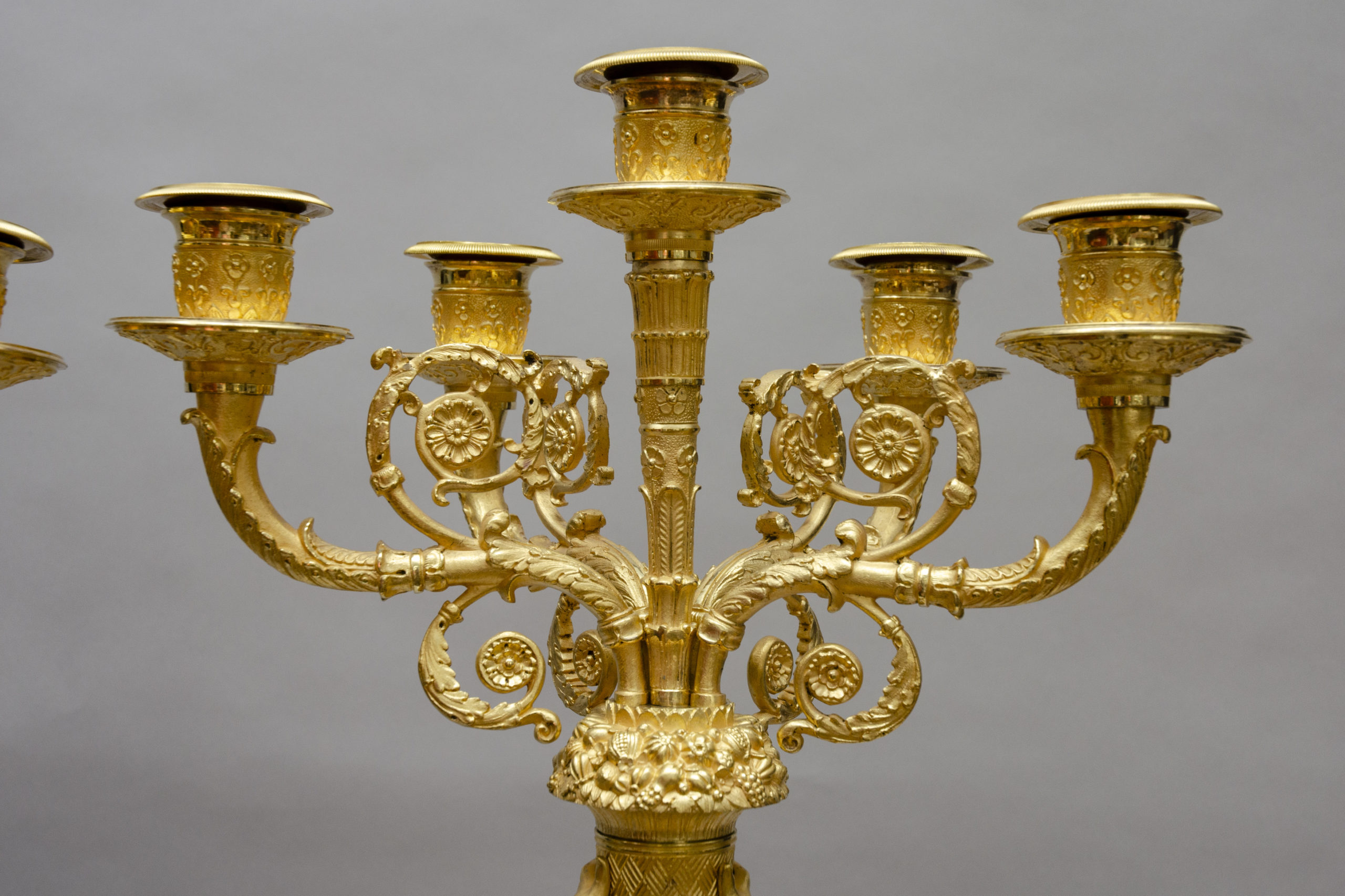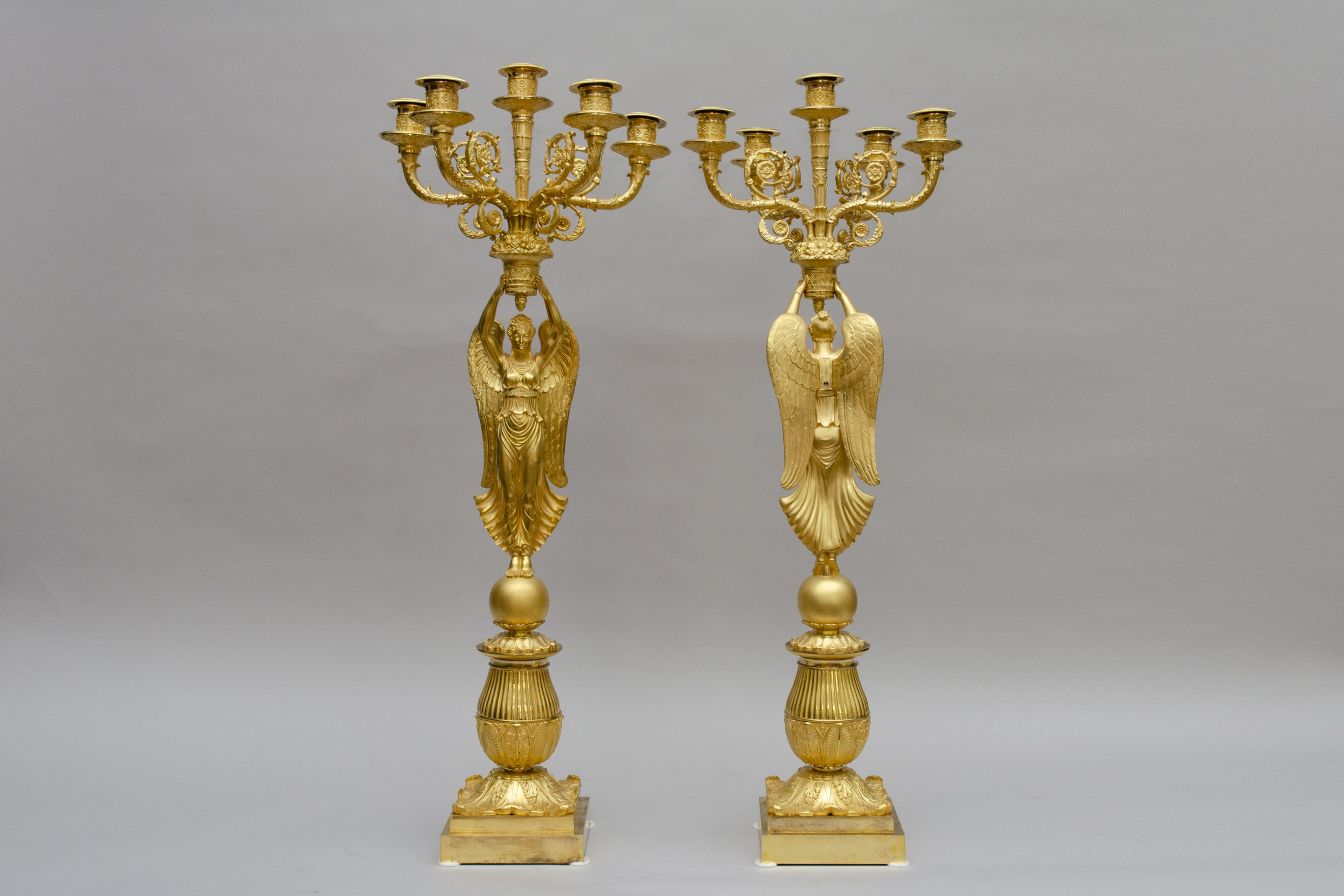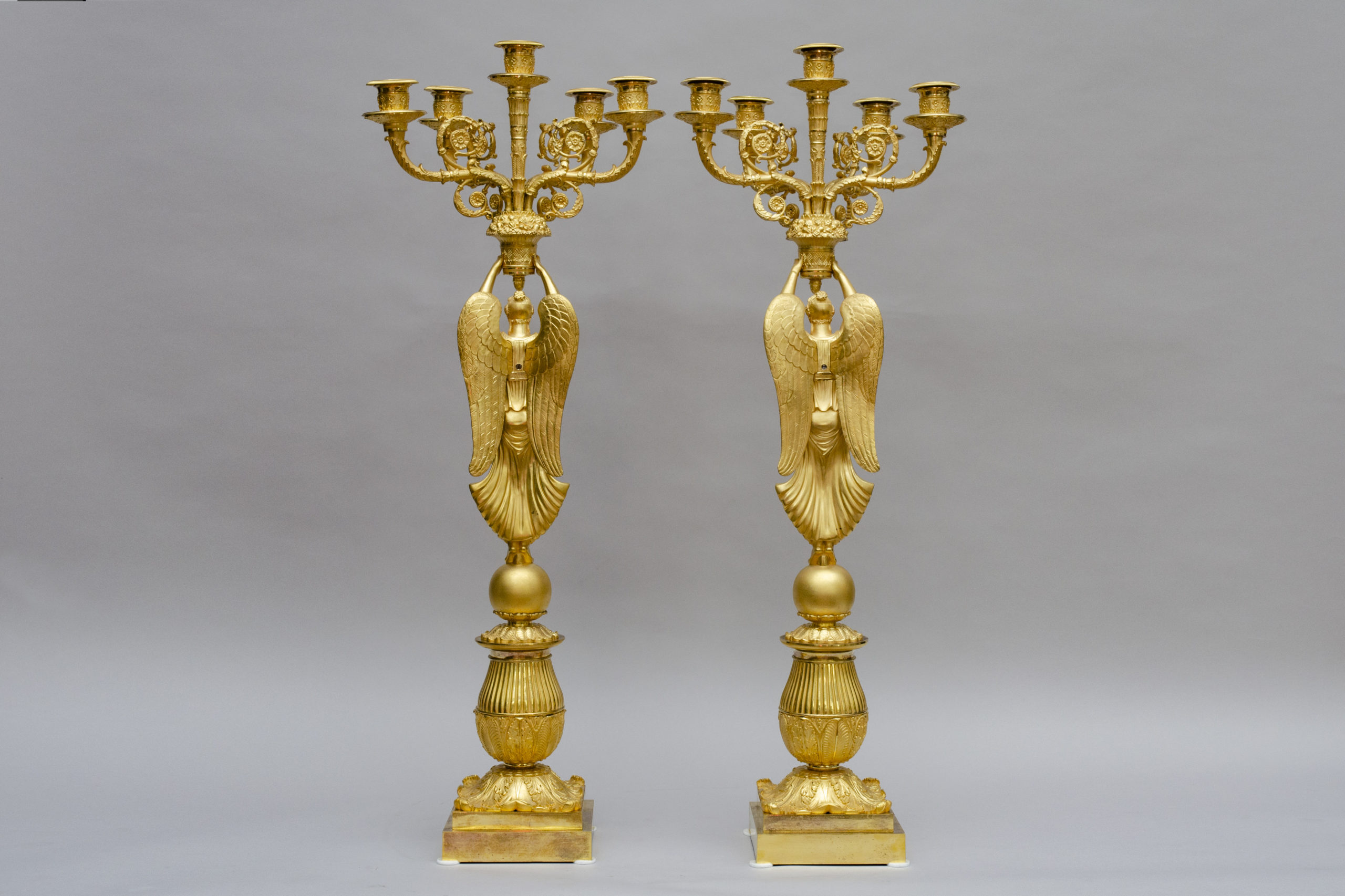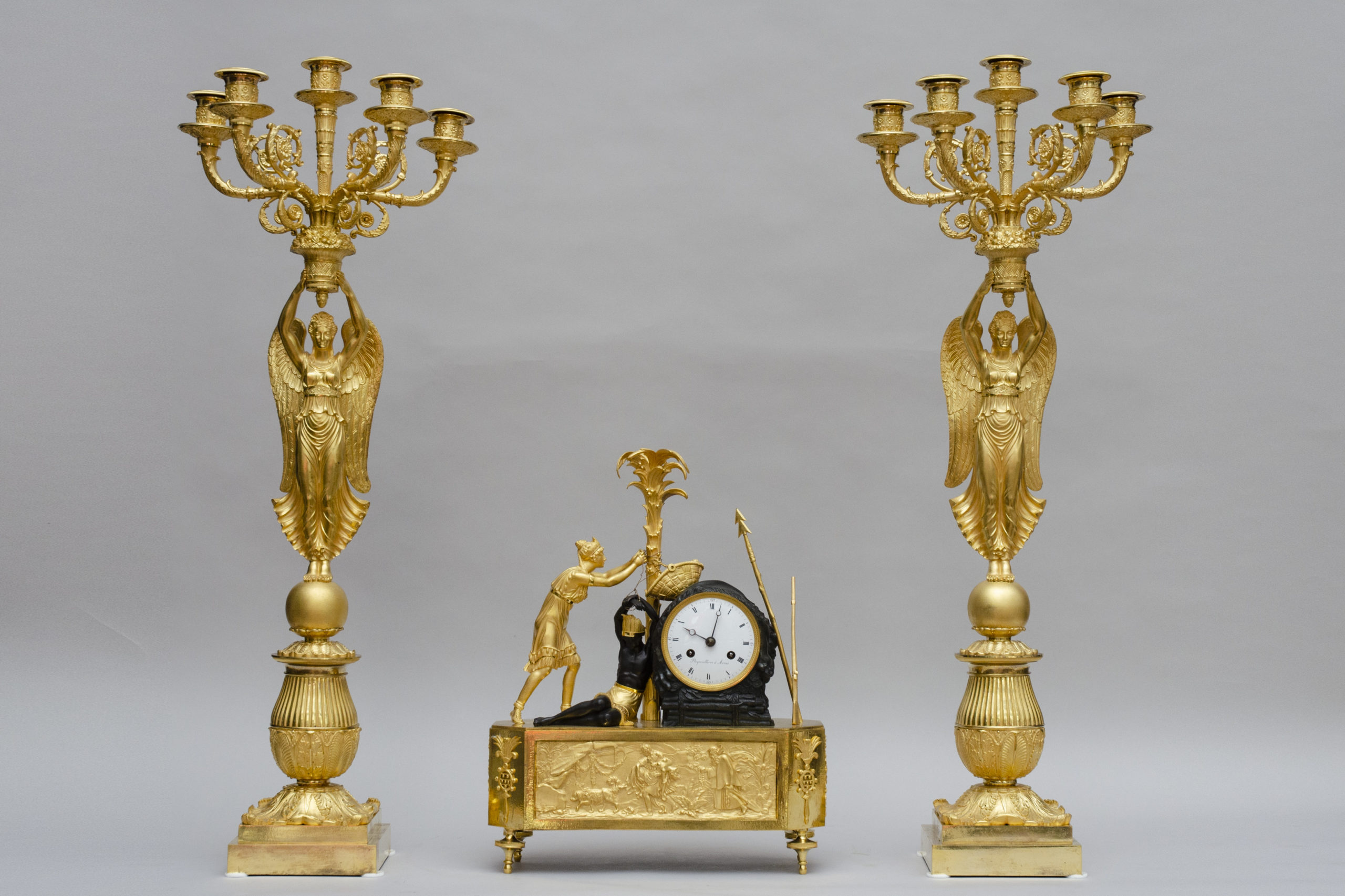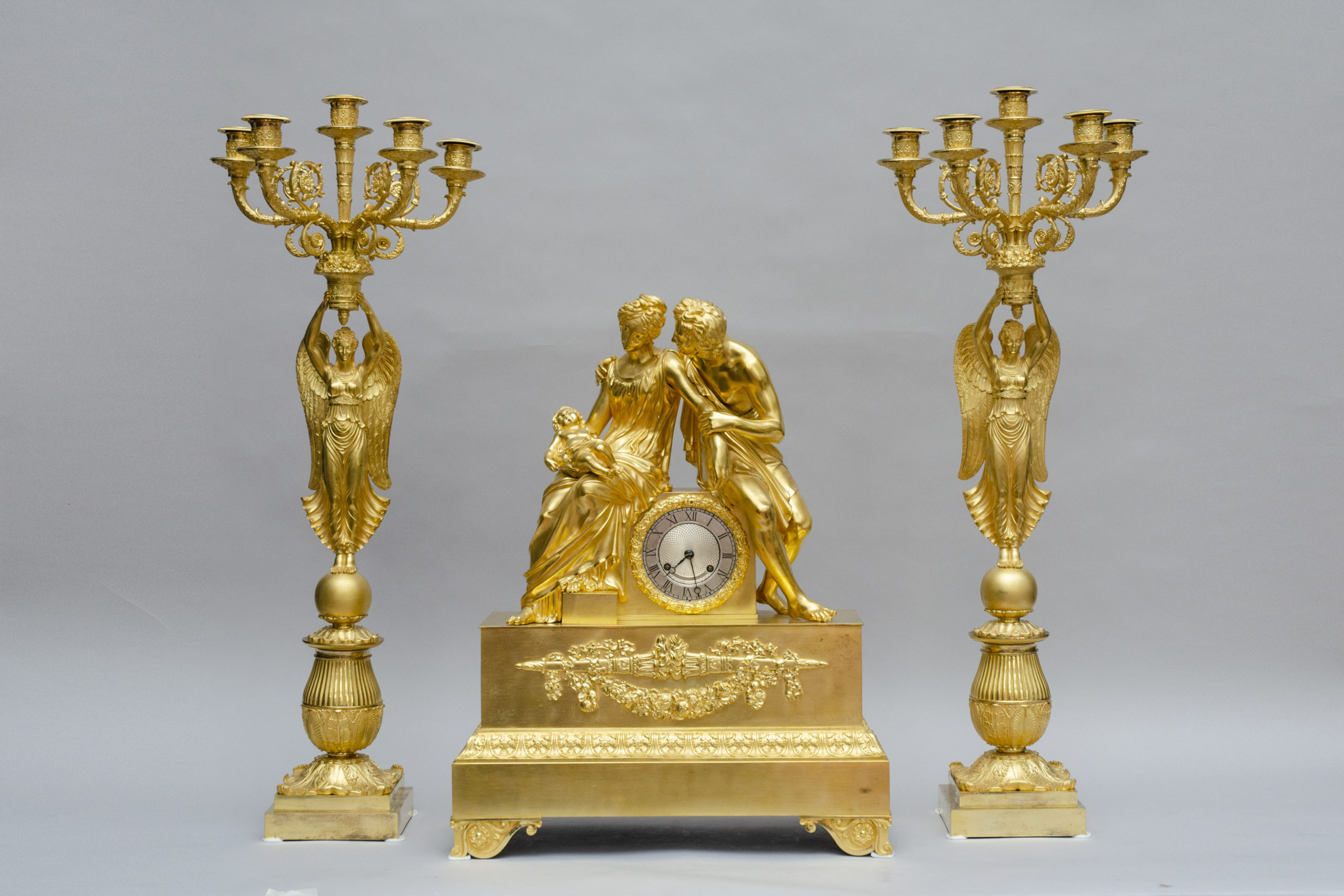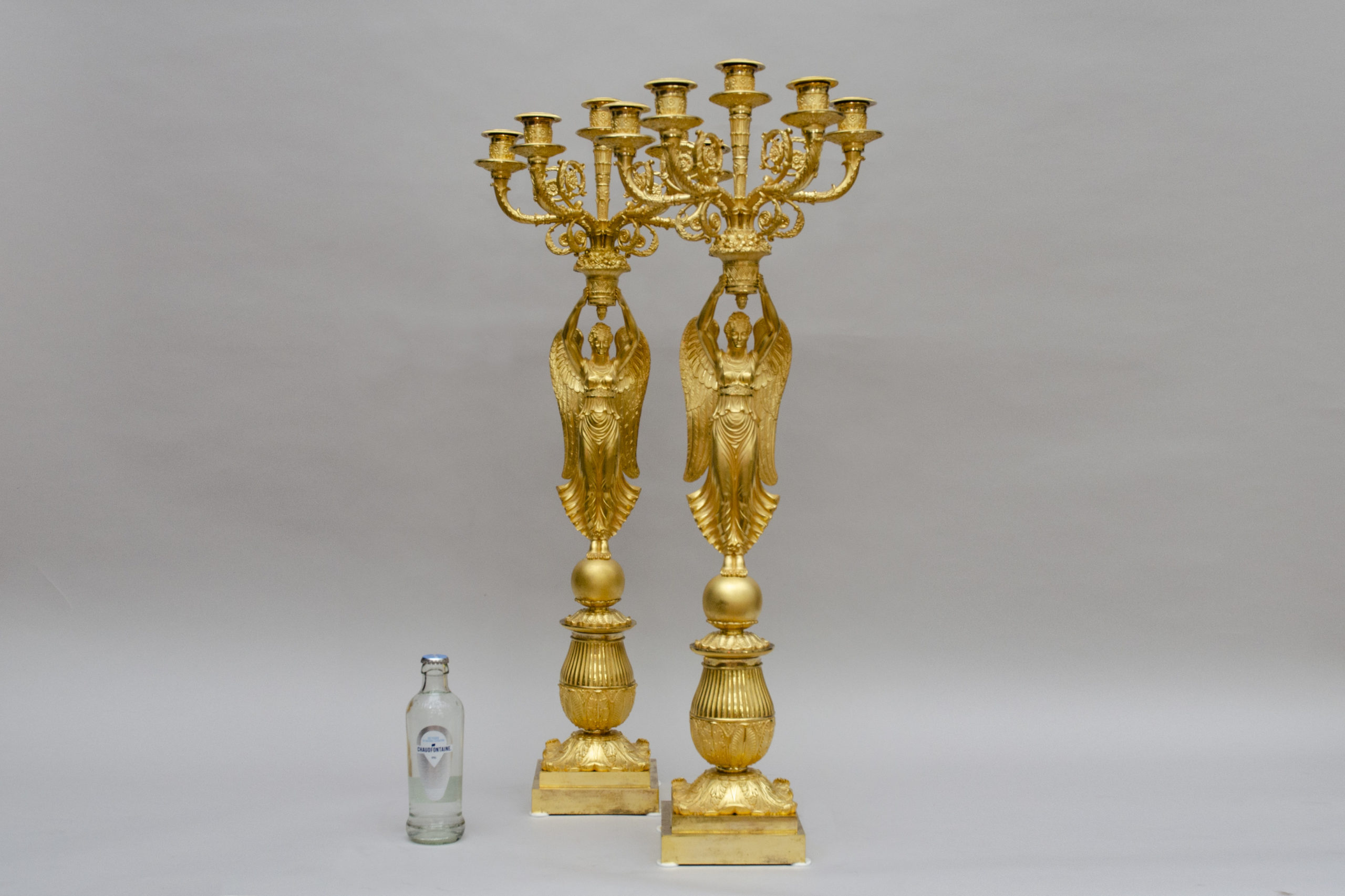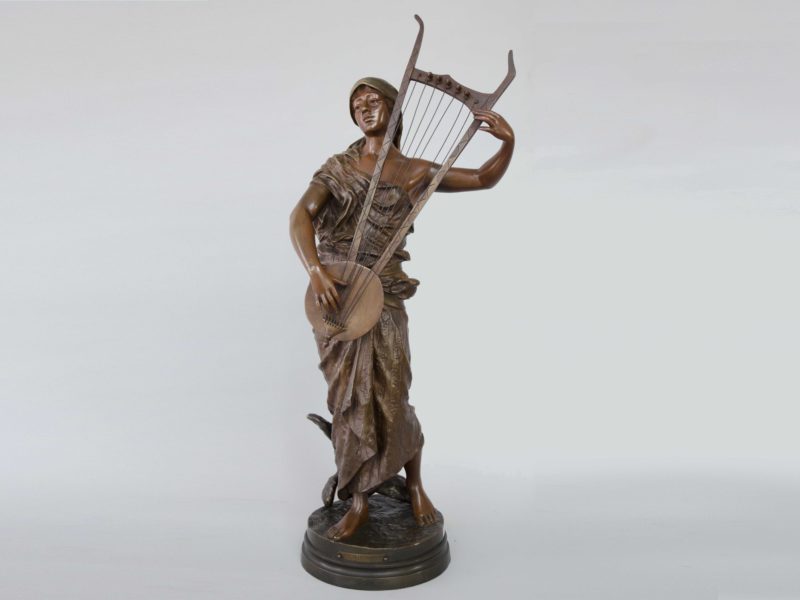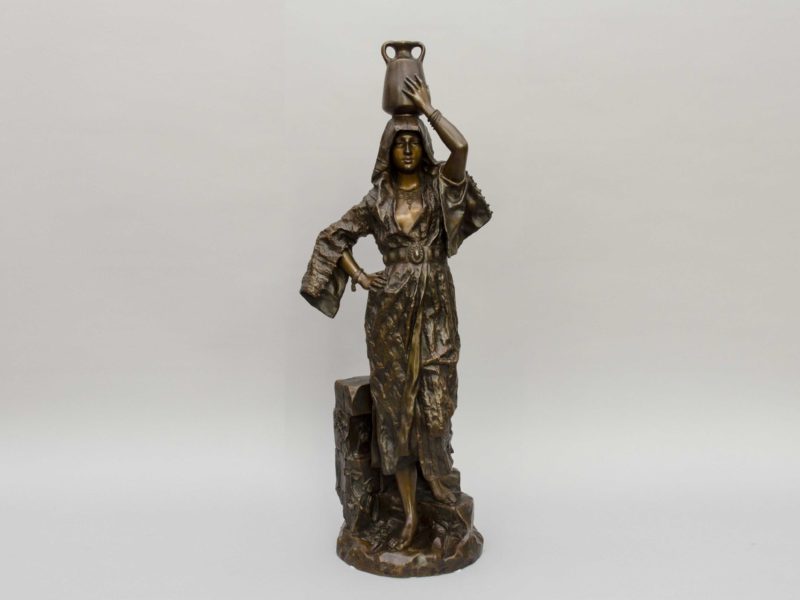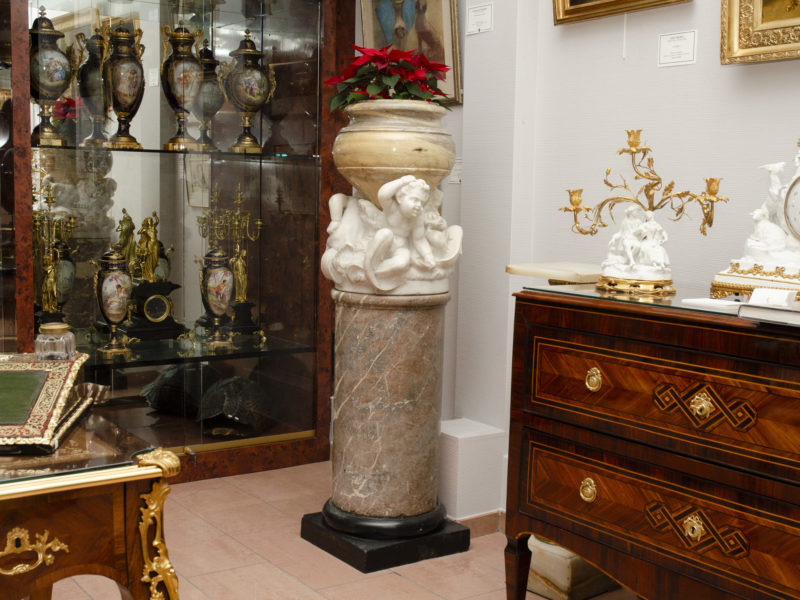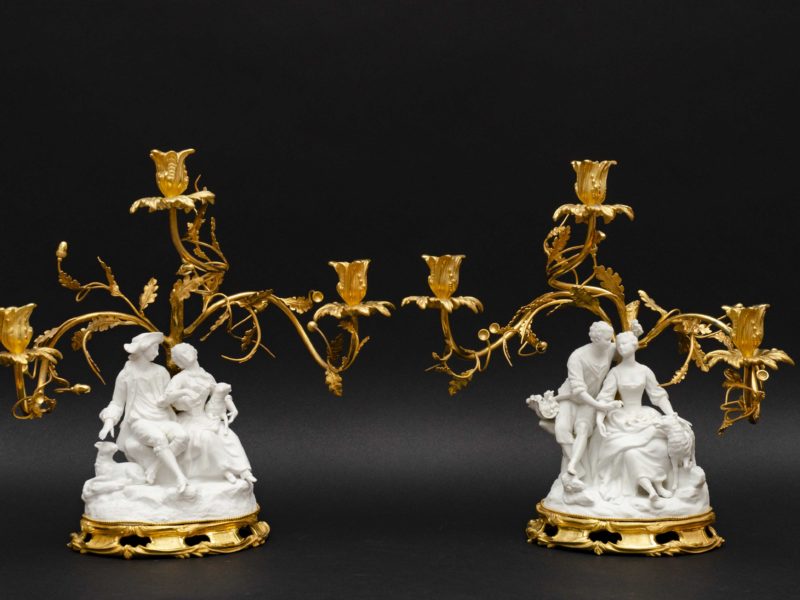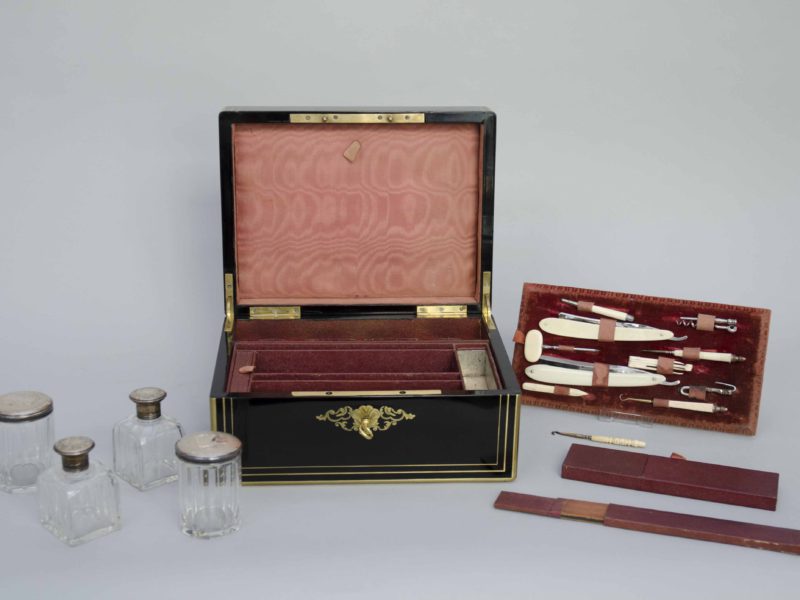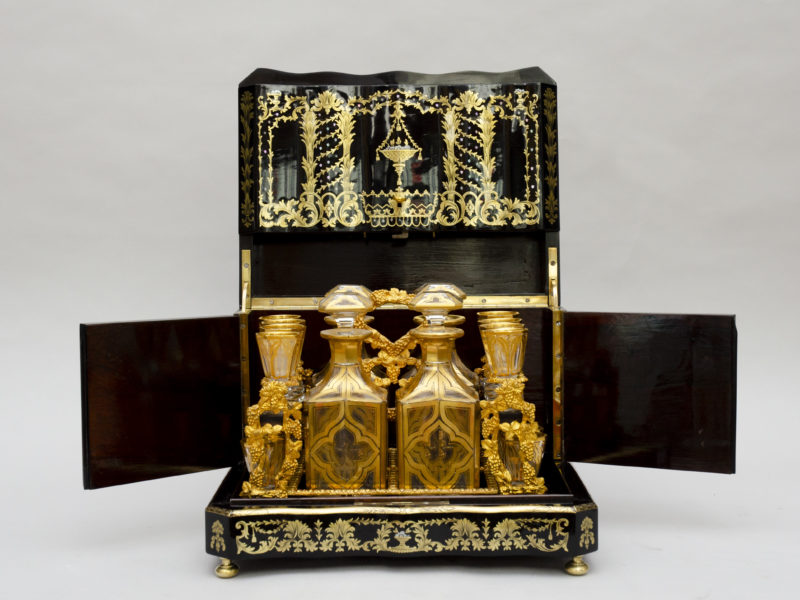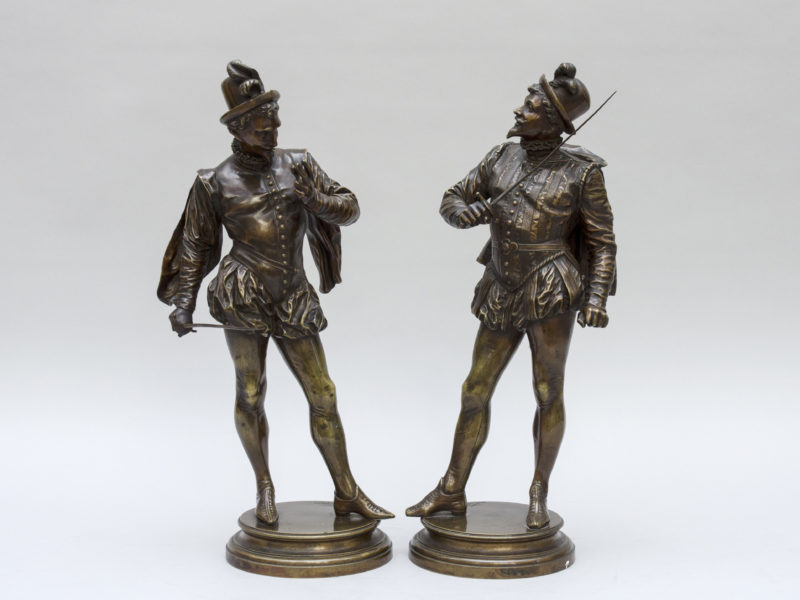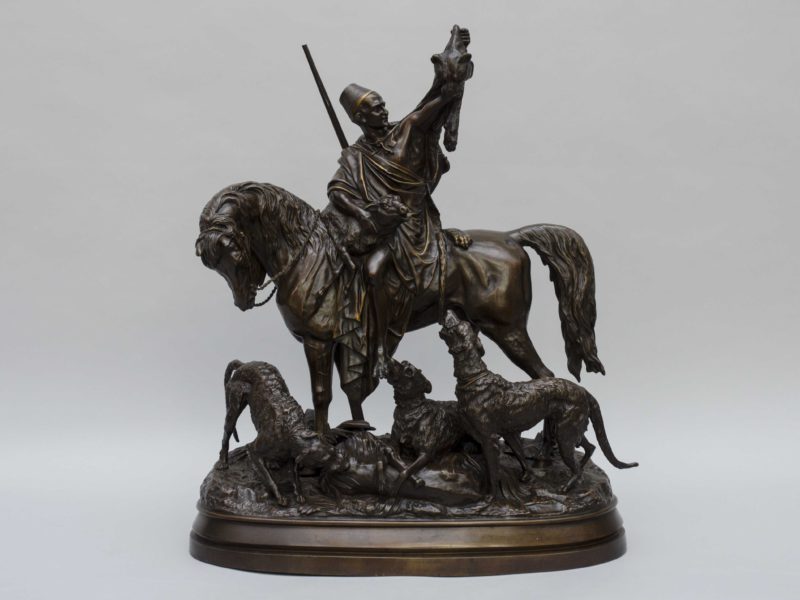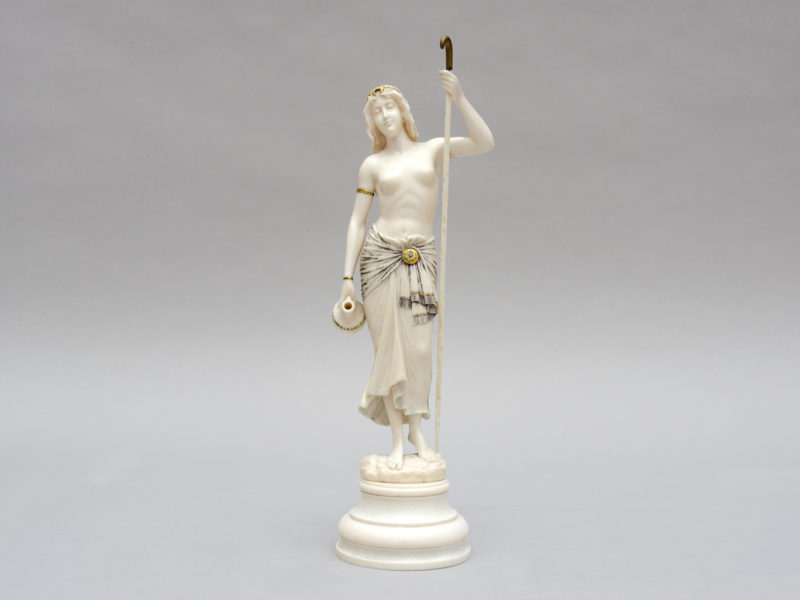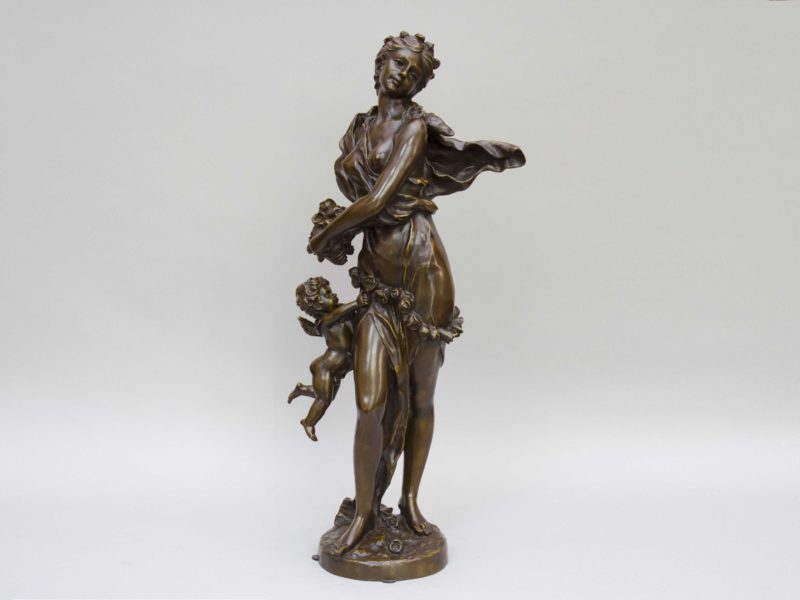Fine pair of candelabras with winged victories after Pierre Philippe Thomire
Out of stock
Refined pair of gild bronze candelabra with winged victories holding five branches. Winged Victories, symbols of military triumph, were a staple of Napoleonic decoration. These candelabra are adorned with Hellenistic winged figures of the Greek goddess Nike or Victory, arms upraised and supporting fruit baskets from which branch five candle sockets decorated with fluting, acanthus leaves, and spirals. The rectangular bases support globes. Refined chasing and mercury gilding. After the model by Pierre Philippe Thomire (1751-1843), know as the best bronze maker of Paris during the Empire period.
Size: H 77 cm – base 14cm x 14 cm
Paris, Empire -Restauration period.
Lit: Similar candelabra were designed by Charles Percier (1764–1838) for the boudoir of Empress Josephine at the Château de Saint-Cloud, where they were identified in the 1805 and 1807 inventories. Percier’s original drawing of his candelabra (entitled Pieces of furniture in a “boudoir”) is in the Metropolitan Museum’s collection.
Lit: In Greek mythology, Nikè, daughter of the giant Pallas and the river Styx which flows through the Underworld, is the goddess of victory. Originally, she was probably not worshipped in Athens. A common attribute of Athena, the goddess of wisdom, and Zeus, the father of the gods, Nikè is depicted in art in the form of a small figure that these deities carry in their hands. Athena Nike never has wings, unlike Nikè. The latter also appears carrying a branch or crown or associated with Hermes as the messenger of victory. Nikè is sometimes depicted erecting a trophy or, more often, hovering, wings outstretched, over the winner of a competition; her functions in fact refer to success in war and in all other endeavors. Nikè was thus gradually recognized as a kind of mediator of success between gods and men. Nikè, known as Victoria in Rome, was venerated from the earliest days of Roman antiquity. She came to be regarded as the patron deity of the Senate. Artistic representations of Nikè include the sculpture created by Paionios of Mende around 424 BC and the Victory of Samothrace. The latter, discovered in Samothrace in 1863 and soon exhibited in the Louvre, was probably erected by the inhabitants of Rhodes around 203 BC to commemorate a naval battle.
Out of stock
Contact us
